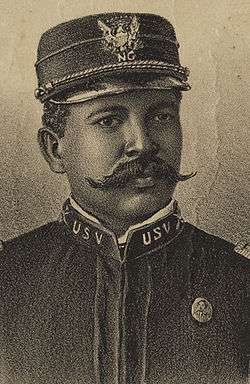James H. Young

James H. Young (1860–1921) was an African American politician in North Carolina.
Young was born in 1860 near Henderson, North Carolina to a slave woman and a prominent white man. Educated at Shaw University, Young was hired to work in the office of Colonel J. J. Young, an internal revenue collector, in 1877, and became involved with the Republican Party. In 1883, Young was elected to the Raleigh board of aldermen, but the board, controlled by Democrats, had Young and three other black Republicans removed from office because they held federal government jobs.[1]
President Benjamin Harrison nominated Young twice for the position of Collector of the Port of Wilmington but the U.S. Senate failed to confirm him.
As owner and editor of the Raleigh Gazette (then "the most popular black newspaper in the Piedmont region of North Carolina"[2]) from 1893 to 1898, Young helped organize the electoral fusion of the state's Republicans and Populists. He was elected to the North Carolina House of Representatives from Wake County on a Fusion ticket in 1894 and 1896. Historian Helen G. Edmonds called Young "the outstanding Negro in the state legislature during the Fusion period." He was vilified by the Democrats, who nevertheless acknowledged his intellect and political astuteness, which they attributed "to his white blood."[3]
Young was an ally of Gov. Daniel L. Russell, who appointed him colonel of a black volunteer regiment organized for the Spanish–American War. The unit did not see action, but Young was believed to have been the first African American to hold the rank of colonel in the United States (Charles Young was the first black colonel in the regular United States Army).
Young later received a federal appointment from Pres. William McKinley as deputy revenue collector for Raleigh, which he held from 1899 through 1913. He was also active in the Baptist church.
References
- North Carolina Historical Marker
- New York Times: "NO WHITE MAN WANTED.; THE FIGHT OVER A NORTH CAROLINA COLLECTORSHIP" (March 30, 1891)
- New York Times: "NORTH CAROLINA REPUBLICANS.; TWO FACTIONS AGAIN AT STRIFE IN WILMINGTON" (September 8, 1891)
- A History of the Negro Baptists of North Carolina
- Pope House Museum
- Members of the African-American Third N.C. Regiment at their encampment near Macon, Georgia, 1899
